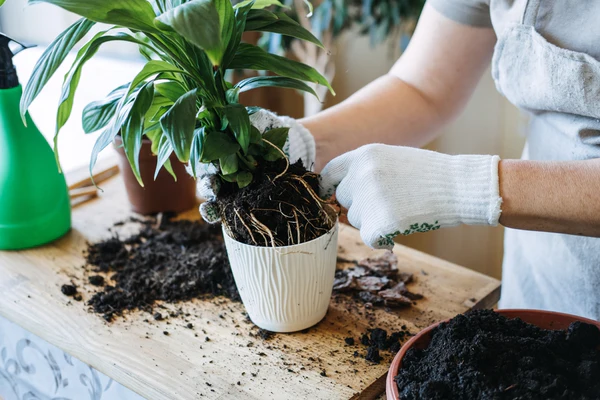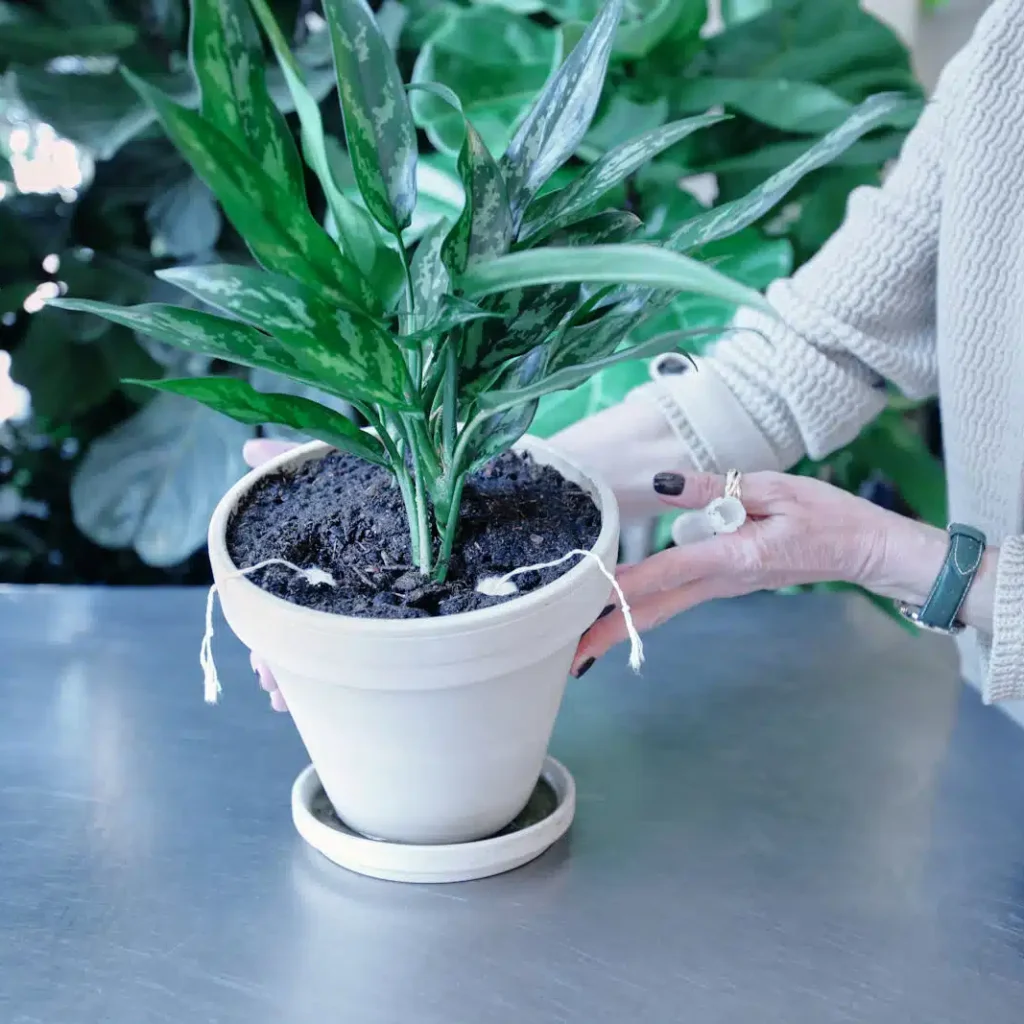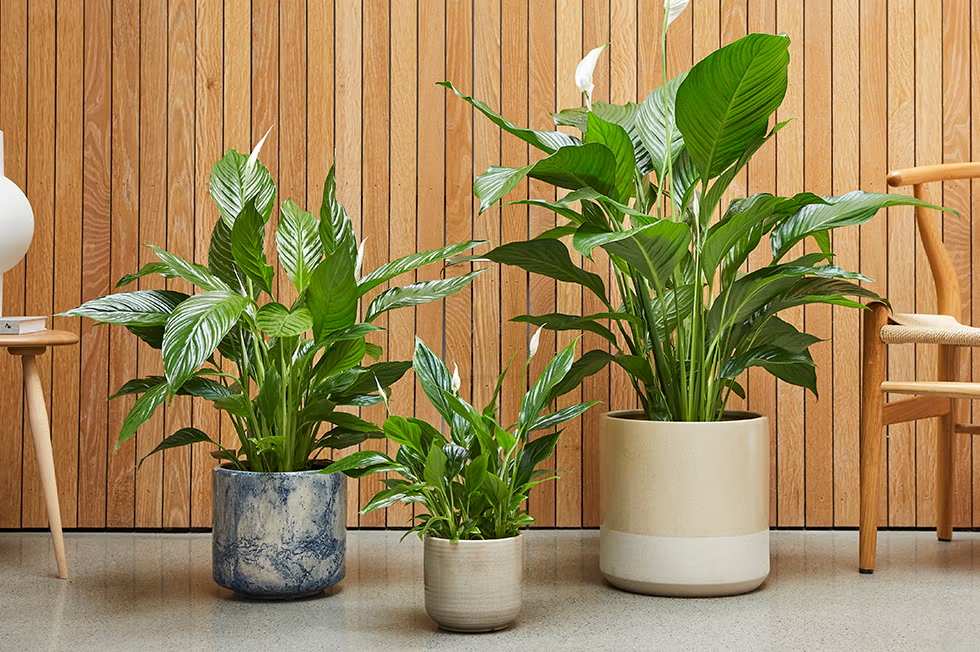Whether you’re a seasoned plant lover or a new green thumb, overwatering is one of the most common mistakes people make when caring for their indoor and outdoor plants. While watering might seem simple, giving your plants too much moisture can lead to serious issues like root rot, yellowing leaves, and stunted growth. Fortunately, by learning to recognize your plants’ needs and adjusting your habits, you can keep them thriving and healthy.
In this guide, we’ll cover 10 practical, easy-to-follow tips to prevent overwatering your plants — ensuring they stay vibrant, lush, and problem-free.

Why Is Overwatering a Problem?
Plants need water to survive, but too much of it can suffocate their roots. Excess water fills the air gaps in soil, depriving roots of the oxygen they need to function. This can lead to root rot, fungal infections, and even plant death.
Common signs of overwatering include:
- Yellowing or wilting leaves
- Mushy stems
- Soggy soil
- Mold growth on soil surface
- Dropping leaves
Understanding how to properly water your plants is essential for their health. Let’s explore how to prevent overwatering and give your plants just the right amount of hydration.

1. Know Your Plant’s Water Needs
Different plants have different moisture requirements. A cactus or succulent needs far less water than a tropical fern or peace lily.
Before watering, check the care guidelines for each type of plant you own. Group plants with similar watering needs together to make maintenance easier.
Pro Tip:
Create a simple plant care chart or journal noting each plant’s preferred conditions — sunlight, watering frequency, and soil type.

2. Check the Soil Before Watering
One of the best ways to avoid overwatering is to test the soil’s moisture level before you add more water.
How to check soil moisture:
- Stick your finger about 1–2 inches into the soil. If it feels dry at that depth, it’s time to water.
- For deeper-rooted plants or larger pots, use a moisture meter for more accurate readings.
Golden rule:
Never water just because it’s “watering day” — always check the soil first.

3. Use the Right Pot with Drainage Holes
No matter how careful you are with watering, if excess water has nowhere to go, it will accumulate at the bottom of the pot, leading to root rot.
Always use pots with drainage holes.
If you love decorative containers without holes, place a plastic nursery pot inside the decorative one so you can remove it to drain excess water.
Bonus Tip:
Elevate pots slightly with pot feet or saucers with ridges to keep them from sitting in standing water.

4. Choose Well-Draining Soil
The type of soil you use greatly affects how water moves through it.
For most houseplants:
- Use a lightweight, well-draining potting mix.
- Add perlite, pumice, or sand to improve aeration and drainage.
For succulents and cacti:
- Opt for specialized cactus/succulent soil with extra drainage.
Avoid using regular garden soil indoors as it’s too dense for container plants.

5. Water Less Frequently, But Thoroughly
Instead of giving your plants small amounts of water every day, it’s better to water deeply and less often. This encourages roots to grow deeper and strengthens the plant’s resilience.
How to water properly:
- Water until it starts to drain out of the bottom.
- Empty the saucer after 15–30 minutes to avoid standing water.
Pro Tip:
Adjust watering frequency based on the season — most plants need less water during fall and winter when growth slows.
6. Adjust Watering to the Environment
Your home’s temperature, humidity, and light exposure significantly impact how quickly soil dries out.
In warm, bright, and dry conditions:
Plants will need water more often.
In cool, humid, or low-light environments:
Soil will stay moist longer, so water less frequently.
Keep an eye on environmental changes like air conditioning or heating, which can affect your plants’ hydration needs.
7. Use a Moisture Meter
If you’re unsure about when to water, a moisture meter is a handy, inexpensive tool that provides a quick soil moisture reading.
Benefits of using a moisture meter:
- Accurate soil moisture levels at various depths.
- Prevents guesswork and overwatering.
- Easy to use for beginners and experienced plant parents alike.
Pro Tip:
Test different areas of the pot, especially for large containers, as moisture can vary between the center and edges.
8. Understand the Signs of Overwatering
Learning to recognize when your plant has received too much water is key to preventing long-term damage.
Look out for:
- Yellow, drooping, or soft leaves
- Wilting despite wet soil
- Brown tips or spots on leaves
- A musty smell from the soil
- Mold or fungus on soil surface
When you spot these signs, stop watering immediately, improve air circulation, and consider repotting if root rot is present.
9. Adjust Watering During Dormancy
Many houseplants and outdoor perennials go into dormancy during colder months, where their growth slows or stops.
During this period:
- Reduce watering frequency.
- Allow the soil to dry out more between waterings.
- Avoid fertilizing unless the plant is actively growing.
Examples of plants that go dormant:
Caladium, Alocasia, some ferns, and most bulbs.
10. Consider Bottom Watering
Bottom watering is a great technique for preventing overwatering from the top and ensuring even soil moisture.
How to bottom water:
- Place your pot in a tray of water.
- Let it sit for 10–30 minutes.
- Remove the pot once the soil feels moist to the top.
- Drain any excess water from the saucer.
This method encourages roots to grow downward and avoids over-saturating the upper soil layers.
Final Thoughts
Overwatering is one of the most common — but easily preventable — plant care mistakes. By understanding your plant’s specific needs, testing soil moisture, using well-draining soil and pots, and adjusting your watering habits with the seasons, you can keep your plants healthy and beautiful.
Remember: it’s always better to underwater than overwater. Most plants recover more easily from a little drought than from soggy, oxygen-starved roots.





